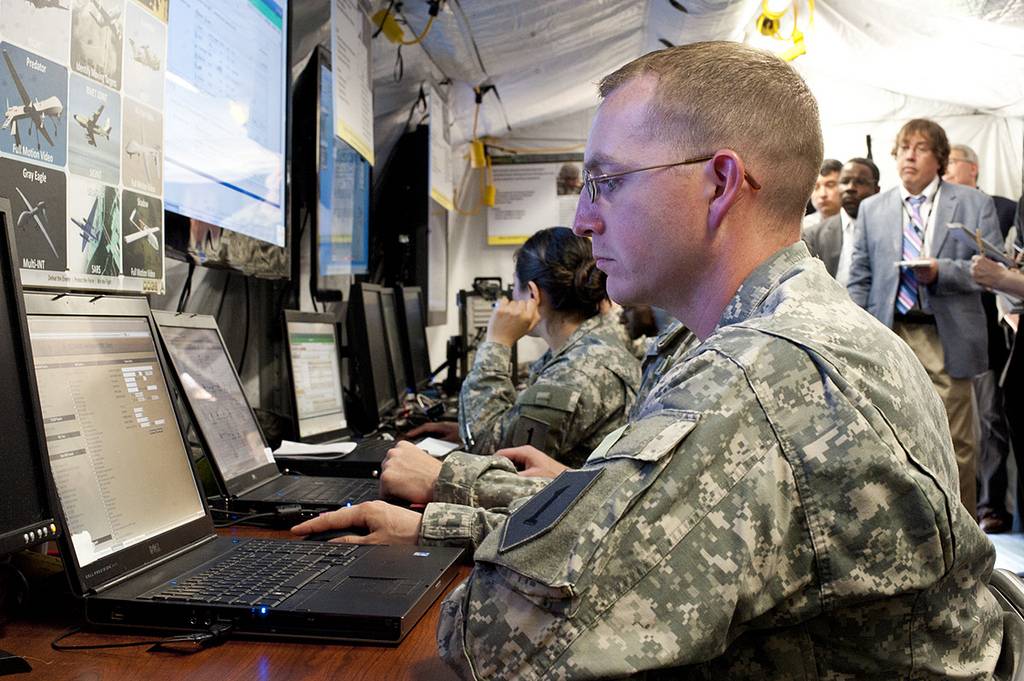Future versions of the Distributed Common Ground System – Army, or DCGS-A, will be less complex and easier to use, Army leaders told lawmakers.
The DCGS-A system is an intelligence collection, processing, and dissemination tool that Army leaders have acknowledged is “complex” but “complete.” They say coming iterations of the tool will address the issue of complexity and will make the system easier for Soldiers to use.
“‘We have acknowledged that the complexity associated with the buttonology … bringing that information together … has been difficult,” said Lt. Gen. Michael E. Williamson, military deputy to the assistant secretary of the Army for acquisition, logistics and technology. “So we have tried to invest a lot of time, and we have also engaged with over 150 vendors through a series of industry days, to find out how we can improve the existing system.”
During a hearing on Army modernization, before the Senate Armed Services Committee, subcommittee on Airland, April 14, Williamson told lawmakers that challenges with DCGS-A are “being addressed in subsequent increments of the DCGS program.”
The general also said that during upcoming evaluations of the system in May, “I think you will see a completely different perception of how that tool is provided.”
JOINT LIGHT TACTICAL VEHICLE
The Army plans to purchase 49,099 Joint Light Tactical Vehicles, or JLTV, and expects that initial operating capability on the vehicle will come in fiscal year 2018. The JLTV provides to the Army a better balance of payload, performance and protection than did the Humvee.
Maj. Gen. Gary H. Cheek, assistant G-3/5/7, told senators the Army’s priority for fielding the JLTV is focused on combat arms formations first. For echelons above brigade, he said, there will be some JLTV, but there will also likely be residual Humvees in those elements as well.
For “tactical battalions – infantry, armor, artillery – you are going to see JLTVs there,” Cheek said. “Above brigade, you are going to see some mix of those.”
Lt. Gen. Anthony R. Ierardi, Army G-8, also said fielding for the JLTV will be across the total force. “I believe it will be a total force issue plan, from the outset, based on the operational requirements the Army has.”
AVIATION RESTRUCTURE INITIATIVE
Ierardi also told lawmakers that the Army’s Aviation Restructure Initiative, or ARI, will enable the Army to achieve much of the aviation modernization it needs. He said the initiative will allow the Army to “enhance readiness” and “modernize.”
One aspect of the ARI, he said, is the divestiture of Kiowa Warrior aircraft – and all other OH-58 aircraft – that he said was “reaching its shelf life.” Dollars saved from divesting that aircraft will be invested in other programs, such as the Improved Turbine Engine Program and continued improvements to the AH-64 Apache aircraft. It is expected that all OH-58 helicopters will be gone from the Army fleet by 2018.
Another aspect of ARI is to have AH-64E Apache aircraft, paired with the Shadow unmanned aerial vehicle, fill the armed reconnaissance role that was performed by the OH-58 Kiowa helicopter.
Ierardi said the Army plans to move Apache aircraft from the National Guard to the active component, and to also provide UH-60 Black Hawk aircraft as well as UH-72 Lakota aircraft to the National Guard. The general also said that the TH-67 Creek, a training aircraft, would also be replaced by the Lakota.










